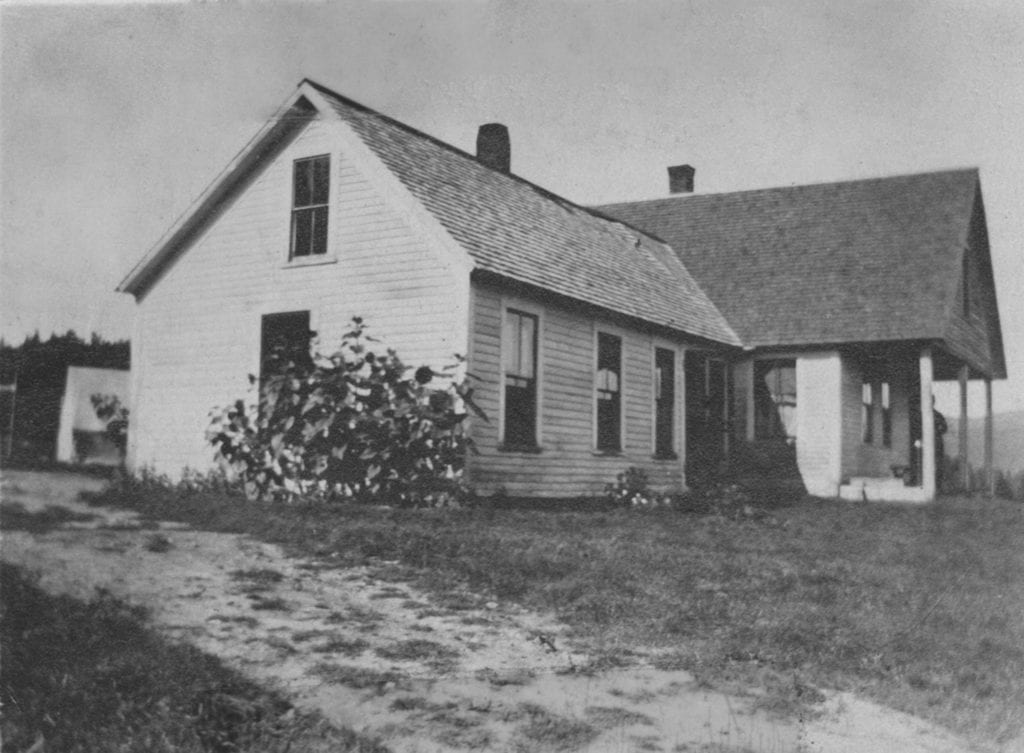
Frost first discovered this area of the White Mountains when he came there to seek relief from hay fever. He brought his family there and they fell in love with the area. The Frosts first rented rooms from an Irish farmer John Lynch in the late summer of 1907 in Bethlehem, N.H. Frost wrote to his friend and early editor Susan Hayes Ward, who had visited the family there, of the time spent at Bethlehem: ‘How long ago and far away Bethlehem is already. Our summer was one of the pleasantest we have had for years. . . There is a pang there that makes poetry.’
Frost had returned from England and had grown romantic for New Hampshire and New England. He was searching for a farm in the Franconia area that had a view. He happened on one farm that he liked but it wasn’t for sale. The owner of the farm Willis E. Herbert was outside and the two men began a conversation. Herbert happened to be looking for more land and if Frost could pay a thousand dollars for the farm then he would be willing to sell it.
Frost showed the house to his family and they all agreed and he shook hands with Herbert on the price of a thousand. It wasn’t until Herbert began to see Frost’s picture in the papers that he decided a thousand was too fair a price for Frost to pay and he should pay one or two more hundred for the farm. Frost agreed and the family moved in June of 1915.
The Frost Place is a house museum and a sanctuary for lovers of poetry and books on a quiet north country lane with a spectacular view of the White Mountains. A non-profit center for poetry and the arts, it was founded in 1976 when a group of neighbors, led by David Schaffer and Evangeline Machlin, persuaded the Franconia town meeting to approve the purchase of the farmhouse where Robert Frost and his family lived from 1915 to 1920. A board of trustees was given responsibility for management of the house and its associated programs, and from 1977 through 2005 teacher and scholar Donald Sheehan served as its founding executive director. In 2011 the trustees appointed Maudelle Driskell as Sheehan’s successor. Stacy Holmes became executive director in 2024.
By today’s standards especially, this is a small house. The house, built in the 1860s, is well preserved thanks to the care of the families that lived here until the mid-1970s. The museum and Frost aficionados and scholars everywhere owe thanks to the foresight and concern of the citizens of Franconia, led by David Schaffer and Evangeline Machlin, voted at their town meeting in 1976 to purchase the former home of Robert Frost and his family in order to see to its safekeeping in perpetuity. Unlike typical modern museums, you won’t find at The Frost Place fancy multi-media displays or cafés, but if you come seeking a glimpse and a sense of the kind of place where a young poet could concentrate, and where his four children could range through the woods and orchards and discover the world, The Frost Place can still offer such pleasures. The view from the porch which inspired Frost is stunning and open to the public year round.In addition to a collection of signed first editions of Frost’s works and other memorabilia from his stay, The Frost Place has a quarter-mile poetry trail with plaques displaying poems written during the poet’s Franconia years
So here the great man stood,
fermenting malice and poems
we have to be nearly as fierce
against ourselves as he
not to misread by their disguises.
-William Matthews, former resident poet


